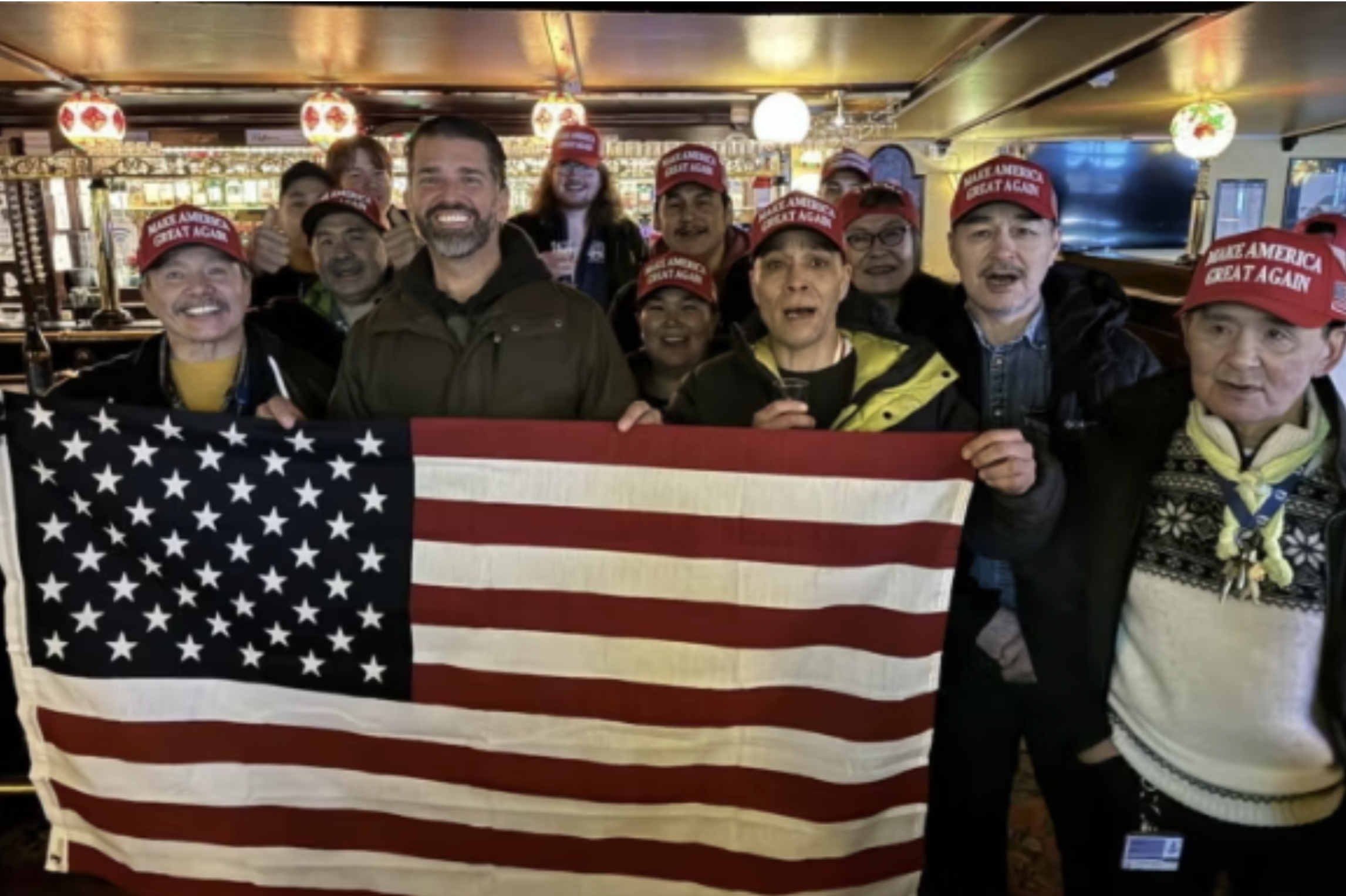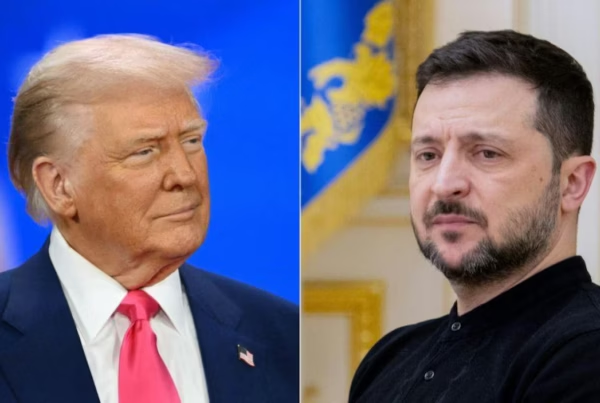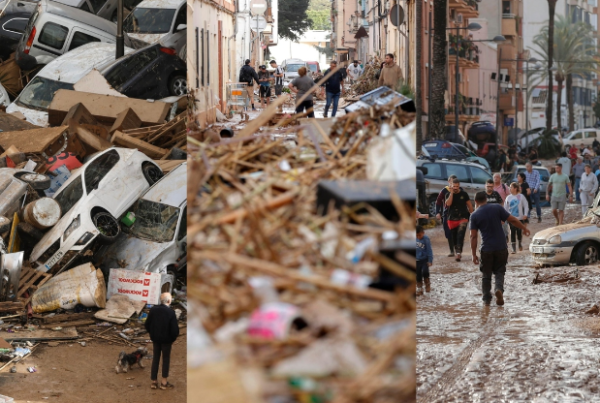Cover: Donald Trump Jr surrounded by purported MAGA supporters during his visit to Greenland on January 7, 2025. © DonaldJTrumpJr/Truth Social
On December 22, 2024 Donald Trump declared on Truth Social that “for purposes of National Security and Freedom throughout the World, the United States of America feels that the ownership and control of Greenland is an absolute necessity.”
While destabilizing diplomatic alliances, his declaration drew attention to two alarming realities about Greenland. First, politicians and some media coverage of the region portray it as a landmass with resources to exploit—or preserve—and not the homeland of an endangered Inuit population. Second, Trump’s imperialist post outraged many, which in turn brought attention to Danish colonial abuses which still persist today.
Greenland became a Danish colony in the 18th century, and was then recognized as an autonomous territory of the Kingdom of Denmark with its own government and assembly in 1979. This arrangement, which is still in force today, preserves Denmark’s control over Greenland’s sovereign powers of national security and foreign policy.
Greenland undeniably holds strategic resources, including unpolluted glacier water and rare-earth elements. These resources have recently become even more attractive, as global warming—which impacts the Arctic three to four times faster than the rest of the world average—has ushered in new opportunities for their exploitation. The changing climate has created the possibility for new mines of precious metals and opened new maritime trade routes. The world’s great powers have sought to establish a claim to this newly desirable territory in the Arctic. In 2018, China issued the White Paper claiming its status of “near Arctic state”, with the aim of fostering its new “Polar Silk Road” initiative and its investments in gas exploitation or subsea cable construction.
Russia is cooperating with China in the Arctic in industry and science. In addition to coal mining in the Norwegian archipelago of Svalbard, Russia uses the Arctic as a symbolic showcase of its military equipment.
The United States too has military power at stake in the Arctic. Greenland has been hosting the American base Thule since World War II as a strategic observatory for missile and spatial activity. The US is also a part of the competition for resources, since Greenland holds similar reserves of rare-earth metals as the US. In 2022, KoBold Metals—a company funded by Jeff Bezos and Bill Gates which harvests rare metals using AI technology—launched its first drills in Disko Bay, on the west coast of Greenland.
Thus, for centuries, global powers have been fighting over Greenland as a strategic land of plenty. However, 57,000 people live on this island and they have been suffering from such an imperialist approach. The exploitation of Greenland starts with Denmark. While Trump’s expansionist declaration outraged many, Danish colonialism has left a terrible legacy in Greenland—and what’s more, it continues to subject Inuits to racist rule.
Today, the population struggles with pauperisation engendered by colonial policies set up by Denmark. 20% of Greenland’s population lives under the poverty line. After World War II, Denmark implemented industrial commercial fishing to develop Greenland’s local economy. Due to the lack of labor force in villages, fish factories only opened in Nuuk, the capital. Ancestral Inuit economies based on collective hunting and trading were undermined, populations were forced to flee rural areas to find work, and entire villages disappeared. As a result, Inuits faced culture clash and stigmatization in urban centers. Not only were they losing their traditional identity, but difficulties integrating furthered stigmatization. As communities collapsed, alcoholism, domestic violence and suicides rates rose. Between 1970 and 1980, Greenland’s suicide rate quadrupled, and today it is five times higher than in Denmark and six times higher than in the US. Social and sanitary isolation experienced by the Inuits in the 1980s—when suicide was stigmatized and no therapists spoke Greenlandic Inuit—still prevail today, as health services are concentrated in Nuuk. In Tasiilaq, a town on the Greenland’s east coast, one in five inhabitants commit suicide.
In addition, Denmark has been leading racist programmes targeting Inuits for decades on the issues of birth control, education and parenting. In 1951, the government took 22 children aged from five to eight away from their families to have them learn Danish for 18 months in Denmark. Once brought back to Greenland—for the 16 who hadn’t been adopted by their host families—they were placed in an orphanage for the rest of their childhood to be turned into Danish role models for Greenlandic society. It took Denmark 70 years to officially apologize for this “unfair and heartless” social experiment, as deplored by Prime Minister Frederiksen on December 15, 2020. However, it still hasn’t apologized for the forced sterilization of 4,500 indigenous women and girls set up between the 1960s and mid-1970s. This measure limited population growth by fitting half of the fertile women of the island with sterilization coils—often without their consent. Since 2023, a growing group of women has been suing the Danish government for violating their human rights.
Decades after these sandals, Denmark is still implementing discriminatory measures through psychological tests measuring parenting abilities–or more so civilization. These parenting competency tests (FKU) enforced in Denmark and solely conducted in Danish rely on a eurocentric definition of parental education. They deem cultural differences a lack of cognitive ability. As a consequence, parents from a Greenlandic background are seven times more likely than other Danish families to have their children removed by social services. Recently, the case of Keira Alexandra Kronvold—a Greenlander who does not speak fluent Danish who had her three toddlers removed after taking the test—revived protests that have gone unheard by the government for years. Not later than in November 2024, the Danish Minister of Social Affairs and Housing, Sophie Hæstorp Andersen, vowed to abolish the test in cases involving families of Inuit background. But she only encouraged rather than constrained municipalities to stop using it. Yet, (un)surprisingly, Denmark announced its abolition on January 20, 2025 to replace it with a special programme suiting Greenlandic language and culture. According to activists like Aka Hansen, an Inuit leader of the protests, such a declaration reflects an opportunistic measure aiming at improving Denmark’s colonial image as America is coveting the island.
As shown by recent polls, more than two-thirds of Greenlanders support independence. Greenland’s emancipation is certainly going to be a key issue in 2025, with Prime Minister of Greenland Mute Egede’s desire to set up an independence referendum. Last March 11, the legislative election of Greenland’s Parliament resulted in the defeat of the incumbent ecological coalition Inuit Ataqatigiit by the pro-business center-right Demokraatit Party and the nationalist Naleraq Party, which respectively won 29.9% and 24.5% of the vote. Both parties advocate for independence but with distinct approaches: while Democrats favor a long-term process, Naleraq foresees prompt emancipation from Denmark.
However, independence faces many paradoxes and dilemmas. Responding to Trump’s claim, Egede asserted “we are not for sale.” While stressing his determination to fight for freedom, he remains open to cooperation and international trade as key to economic emancipation from Denmark. American investments would raise fears about the relapse of extractive policies. They may lead to total control of the island through enslaving economic subsidies like those implemented by Denmark after World War II. On the contrary, Greenlanders view independence as an emancipating opportunity to improve socioeconomic indicators, as 78% of Greenland’s population oppose independence if it leads life standards to decline. But social protection aiming to improve health and welfare is less likely to be a priority for the US, despite President Trump’s promise to “take care” of Greenland’s population. Although Donald Trump Jr. presented America as a Good Samaritan when he visited Greenland last January 7—inviting homeless people to have lunch in a restaurant, handing out MAGA merchandise, and calling his father and putting him on speaker—real protection for Inuit, unemployed or ill people seems unlikely given the US’ treatment of its own Native population.
Besides, wouldn’t it be paradoxical to count on the US to emancipate Greenland from colonial traumas in which America took part? The building of the military base in Pituffik in 1943 dislocated local populations. In 1968, during Operation Chrome Dome, an American nuclear bomber crashed on Thule and contaminated the area, while another base—Camp Century—has today become a nuclear waste dump.
On the other hand, sanctuarization of the Arctic, as the EU and the UN have called for, has been denounced by indigenous unions as green colonialism. Once again, actual people live in Greenland, hence it can’t become a “natural reserve, devoted to peace and science” like Antarctica. Indeed, not only does biodiversity need to be preserved but also Inuits and their culture. Their survival requires economic development and employment—unless the loss of economic gain entailed by sanctuarization is compensated by international aid.
No matter what is to be decided, it should be up to sovereign Greenlandic people to prioritize their own freedom and national security, and not America.
Other posts that may interest you:
- A Tribute to the Harlem Hellfighters: When Remembrance Becomes Political
- Learning from partisan conflict could be the last chance to save American democracy.
Discover more from The Sundial Press
Subscribe to get the latest posts sent to your email.





